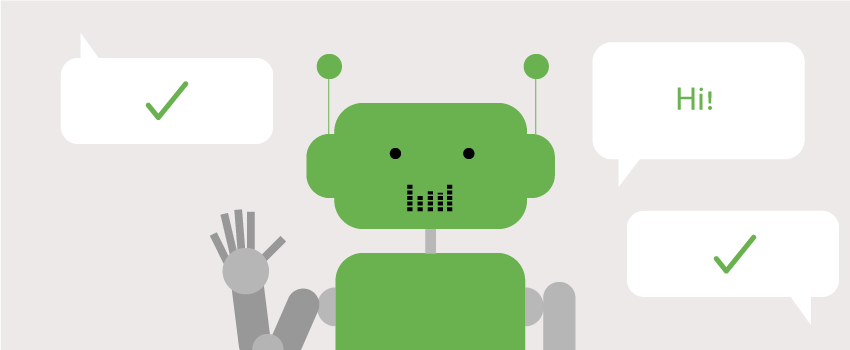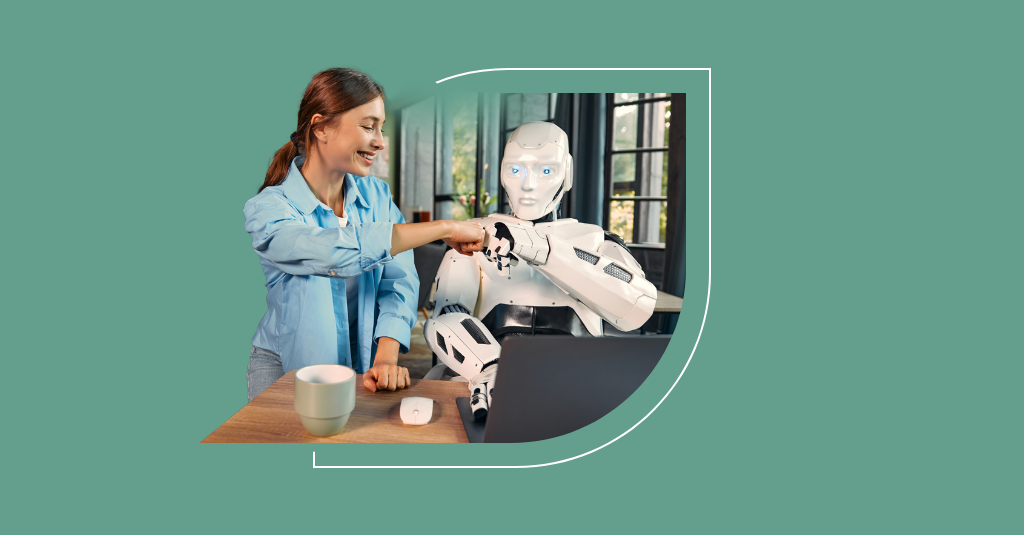The Role of Chatbots In IT Service Management

Artificial intelligence (AI)-powered chatbots have been rising in popularity over the last few years, and with organizations under increasing pressure to “do more with less” while improving the employee or customer experience, chatbots and the technology behind them represent a powerful tool for next-generation IT service management (ITSM).
Chatbots have the potential for organizations to save on service and support costs, to speed up response times, and to free up service desk analysts for more challenging work. It’s an evolution in support that’s already happening, and even in 2016 Gartner stated that they expect that the average person will have more conversations with bots than with their spouse by 2020!
What are chatbots?
Chatbots, at their core, is software that performs tasks. Powered by AI and machine learning technology, in particular, they’re designed to communicate with humans.
To help with communication context and understanding, natural language processing (NLP) is a branch of AI that allows the chatbot to deal with human interactions in a way that enables it to accurately understand messages and then respond appropriately.
For example, let’s say you ask a chatbot “What’s the time?” it’s the NLP that provides context and meaning such that the chatbot can offer up with the best response – perhaps “14:45” (based on the resources it has access to) rather than “The indefinite continued progress of existence and events in the past, present, and future regarded as a whole,” i.e. definition of what time is.
Chatbots also learn from their interactions, which enables them to widen their knowledge base and become even more useful to the customer (and service provider). There will, of course, be instances where a customer asks a question that the chatbot doesn’t know the answer to. Here, the chatbot will pass the ongoing communication to a human operator.
The current state of chatbots
Chatbots definitely haven’t managed to achieve mass adoption yet though, even in the business-to-consumer (B2C) world where a State of Chatbots Report 2018 found that only “15% of consumers have used chatbots to communicate with businesses in the past 12
months.”
While this is still low compared to traditional access and communication channels, one of the reasons chatbots have been starting to rise in popularity is that traditional support channels bring with them customer frustrations such as:
- Slow response times and high wait times
- Unfriendly customer portals, including that it can be tricky to find answers for simpler queries
- Taking too long to resolve simple queries.
But, before we delve into the benefits and how chatbots fit into ITSM, lets first look at what a chatbot actually is.
The benefits of chatbots
Chatbots improve the overall efficiency of ITSM operations and the productivity of customers by handling routine employee issues faster. In particular by taking on responsibility for high-volume, low-value repetitive tasks where support teams are wasting valuable time on likely resource-heavy tasks that a chatbot could take care of with ease.
In addition to the available time and cost savings, another important benefit to consider is how fulfilled IT support employees are by their work. Where it can be very demoralizing for a support employee to spend much of their day performing boring, basic work – which can lead to poor employee retention in the long run.
It can be very demoralizing for an #ITsupport employee to spend much of their day performing boring, basic work. #Chatbots can help to reduce the volume of mundane, low-level tasks that your team need to perform. Share on X4 IT support chatbot benefits
Here are four key ways that chatbots will benefit your IT service desk and its customers:
- Improved self-service quality – Chatbots can take care of routine incidents and service requests while providing a swifter service. Both customers and IT staff benefit from this.
- Personalization – Chatbots can provide real-time, consistent, and personalized interactions with customers (thanks to the technology knowing everything that’s known about the customer). This personalization can go a long way to improving overall customer satisfaction.
- 24/7 support availability – Chatbots allow IT service desks with staff and/or cost limitations to offer around-the-clock service. This 24/7 availability also means that response and resolution times are improved, as is productivity.
- Cost optimization – Chatbots, as with self-service, can reduce the costs related to handling routine issues.
Similar bot technology can also be used to augment IT service desk analyst capabilities. This “agent assistance” can fulfill a variety of repetitive tasks such as automatically categorizing incidents and service requests and assigning them to the most appropriate analyst or resolution group based on priority. Or assisting agents with context-based knowledge. Or performing common tasks such as retrieving information diverse enterprise systems, generating reports, notifying customers, etc.
If you choose to implement a #chatbot, it needs to produce a positive ROI. And for it to do this, your business needs have to be clear, and with measurable goals. Share on X4 tips for implementing a chatbot
- Identify your audience and their needs – If you choose to implement a chatbot, it needs to produce a positive return on investment (ROI). And for it to do this, your business needs have to be clear, and with measurable goals. To achieve this, start by figuring out who or what you’re trying to help and why. The narrower and more targeted you can get with this step, the better the outcome is likely to be.
- Choose a platform – Once you’ve identified who you’ll be helping with the chatbot, the next step is choosing a platform where the chatbot will be built and managed. It’s easy to feel overwhelmed with options at this point, but start with a checklist of requirements and identify a number of platforms and how they can meet these requirements. Don’t overlook the fact that there might already be a corporately approved platform that should always be considered first.
- Identify what success looks like – A challenge many organizations have with chatbots (and AI in general) is proving the value, financial or otherwise, that they bring. The most straightforward way to approach this is to determine early on in the process which metrics matter the most to your organization. What type of ROI do those in the C-suite and/or other stakeholders expect to see?
- Implement and learn (and learn) – Once implemented, a chatbot isn’t something you can set up and forget. You need to keep on top of how the chatbot is performing and make adaptations and provide any necessary training (for both people and the technology). Your chatbot should continue to learn and improve over time. And it’s very likely there’s going to be changes required to better serve customers.
If you’ve already implemented, or are in the process of implementing, a chatbot for ITSM what advice would you give to others? Please let me know in the comments.
Did you find this interesting?Share it with others:
Did you find this interesting? Share it with others:









